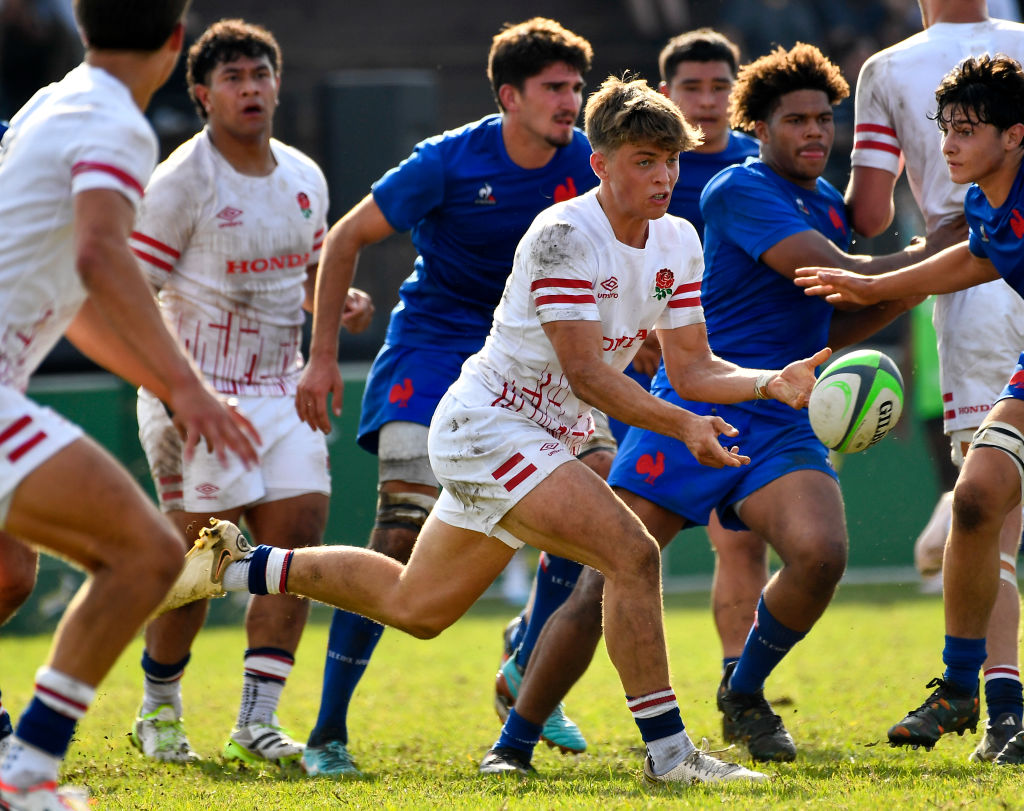Premiership Rugby director Phil Winstanley has suggested the pathway system in England is envied around the world due to the results it is enjoying from its £10million per year academy investment in conjunction with the RFU.
The focus at Wednesday’s professional game partnership media briefing was largely on England and what the new eight-year deal might do for the fortunes of Steve Borthwick’s Test side.
However, the pipeline funnelling talented youngsters into the age-grade system didn’t go unmentioned at the Allianz Stadium presentation fronted by RFU CEO Bill Sweeney and supported by RFU performance boss Conor O’Shea, Premiership Rugby duo Simon Massie-Taylor and Winstanley, along with Christian Day, the general secretary of the RPA players union.
Eighteen months of negotiation went into formulating the new partnership governing the professional game in England, but one aspect of the existing system doesn’t require a massive overhaul – the player development pathway.

It was last July when England were crowned champions at the World Rugby U20 Championship in South Africa and it was suggested by O’Shea that the class of 2025 were shaping up to be even better.
Winstanley, though, delved deeper into the situation, arriving armed at the presentation with a number of eye-catching statistics. “The bit that has presented a slightly different challenge for us has been the playing pathway,” he began, seated in between O’Shea and Sweeney at the Twickenham top table.
“Mainly because it was very early on that Conor and I accepted that we were actually quite aligned – we are not looking to reinvent the wheel here. That’s because the system over the last 10-years plus has been hugely successful.
“We are currently investing £1million per annum between clubs and RFU in each academy, so more than £10m a year, and what we are getting from that is 38 per cent of players go to play in the Premiership who have been identified as an England academy player at 18. Thirty-four per cent go on to play 50 games or more, so we are identifying the right players.
“When you start to compare that to conversion rates in other development systems across the world, it’s phenomenal. Some of the major development systems and pathways are in single figures, some in the early teens and we are getting 34 per cent right.

“So we are getting a lot right and, as we said, we don’t want to reinvent the wheel and we have seen that though seven Junior World Cup finals in the last 10 years. The challenge we had with the pathway was more about how do we get greater value out of it, so how do we get better players not necessarily more players?
“The first challenge in it – and it was probably our biggest challenge in this area – was redefining the boundary system. We lost London Irish, Wasps, Worcester last year and that was super challenging for everybody in the sport.
“But we then had to reallocate the boundaries and the south-west in particular was a challenge because of the congested nature of location of the clubs. That has taken us some time to get that right and we used a lot of metrics to do that.
“Now that we are there, the primary focus for Conor and I and for the teams is we need to develop more individualised, strategic plans for each club. We have been quite generic in the way we have approached the academy system and the way we have managed and audited that centrally.
“What we need to do is be more specific and cater for the individual needs. As an example, Newcastle up in the north-east have got a territory across the country to the west coast and that’s a very different dynamic to manage than what Quins or Saracens might have in London.
“So we need to get that right and, as Conor has touched upon, it’s important to maximise the opportunities for the players but we don’t want them travelling from Cumbria to Newcastle. We have to invest in satellite centres and that will give us an opportunity to engage and connect with the community game as well.
“We are also requiring all clubs to have two state school partners. I know this has been a topic of conversation for a number of years with the make-up of the England team and the role of the independent school section.
“But we invested just over two years ago in a three-year study with Dublin City University, led by Jamie Taylor who used to coach at Leicester. He is looking at how successful we have been, where kids are coming from and at what point do they mature etc.

“One of the things that has been interesting out of that is that at U16 level, 63 per cent of players in the academy have come through the state school system. When that goes to U17 that changes to 46 per cent and the change is there because clubs are identifying players, bringing them together into environments that have got the best system and the best ability to support.
“It’s isn’t to say the state school hasn’t brought those players through. We need to be really clear on the data. And then also we are also very much a later maturation sport. We are very conscious of that and we have tried to delay the entry point into the academy.
“Previously that was at U14. What we now do is we will leave players to play in schools and clubs at 14 and start to bring them into academy at 15 and we will have a two-year foundation phase. We will then follow that with a two-year development phase from U17s, U18s and then U19s, U20s we will have a confirmation phase where we can really assure ourselves we have got the best talent.
“One of the things we did identify needed to change was we needed those players at that confirmation group playing more games and that has been more relevant since we lost the A League four or five years ago. We believe that gives us a logical approach.
“One thing that that we did consider was what do we do around the boundary system and when we reviewed it we felt it was absolutely essential to retain boundaries and that clubs are protected.
“That players within those boundaries in terms of player movement are subject to compensation and rewarding the development of home-grown players through the salary cap. We have done that because we think if can put those protections in place it’s a greater incentive for the clubs to invest into those systems.
“To summarise from a pathway system, we felt we were in a good place we want to keep producing the numbers, but we want to improve the quality coming out at the far end.”





